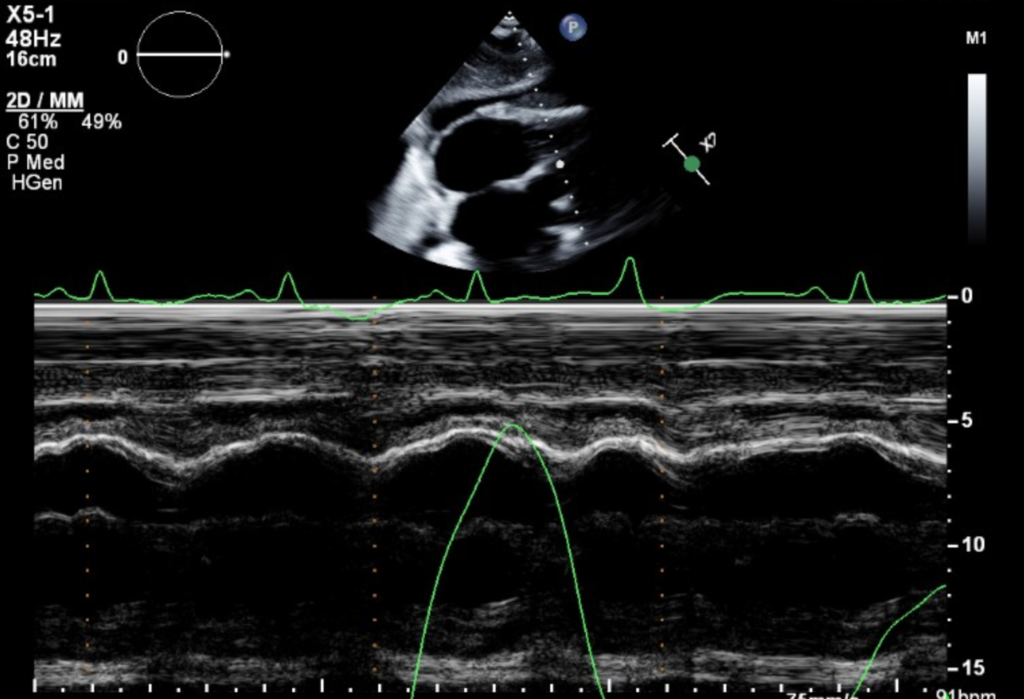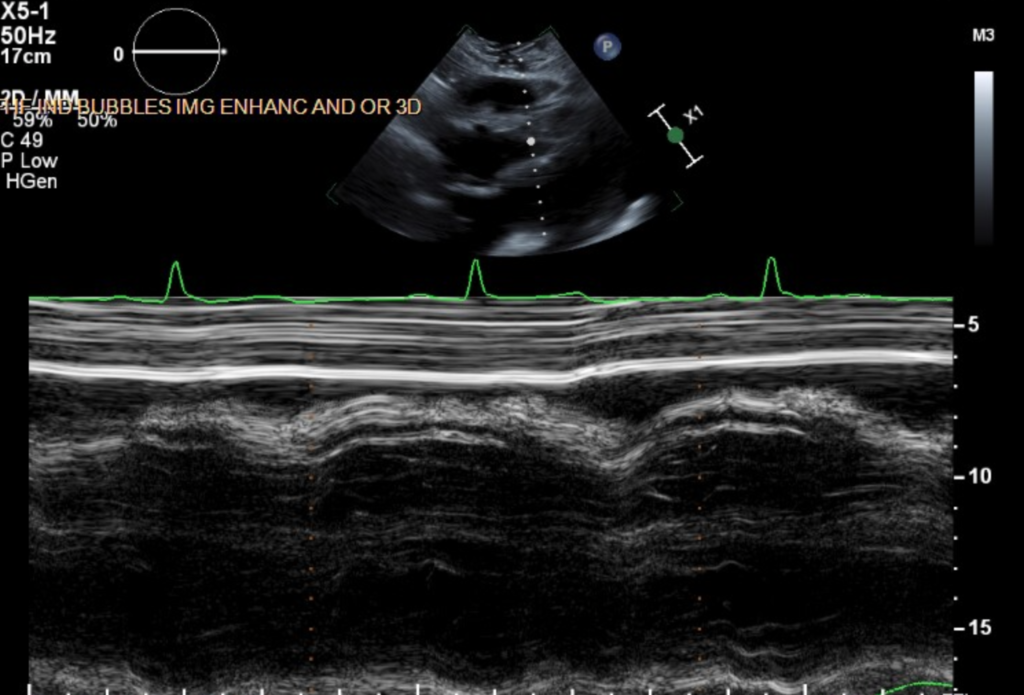The RV withstands a higher pericardial pressure than RA, but eventually also collapses. For this reason, RV collapse is a less sensitive but more specific sign for tamponade. This is reflected in the table on the last page. RV collapse occurs in early diastole, which is when the ventricle is least filled (blood all pumped out during systole, and not yet replenished from the RA), and persists until the point in diastole when filling pressures into the RV increase the RV pressure above the pericardial pressure. Note that this sign is less reliable if there is RV hypertrophy, e.g. from pulmonary hypertension, or if there is increased RV diastolic pressure from other reasons, e.g. hypervolemia. Apart from on A4C, RV diastolic collapse can also be seen in PLAX and M-mode. Correlation with the EKG signal indicates that the RV collapse here persists into late diastole.

